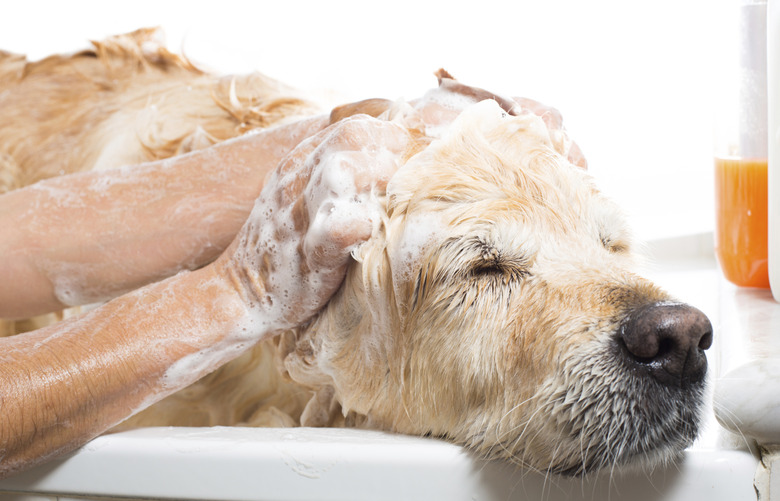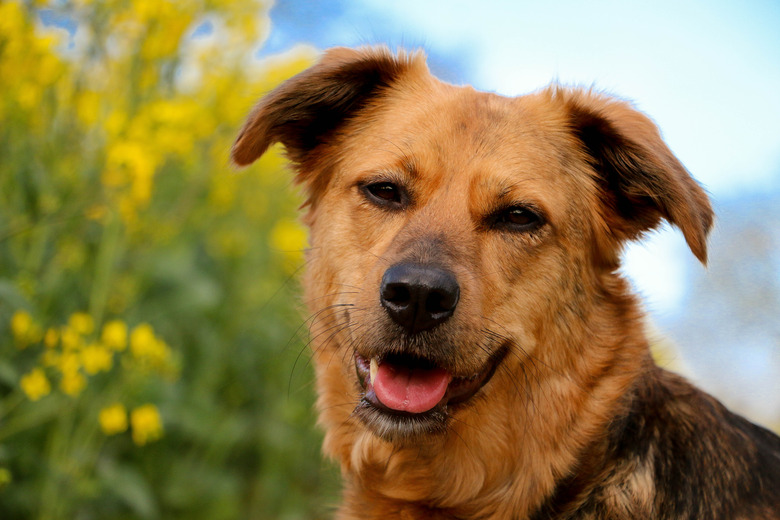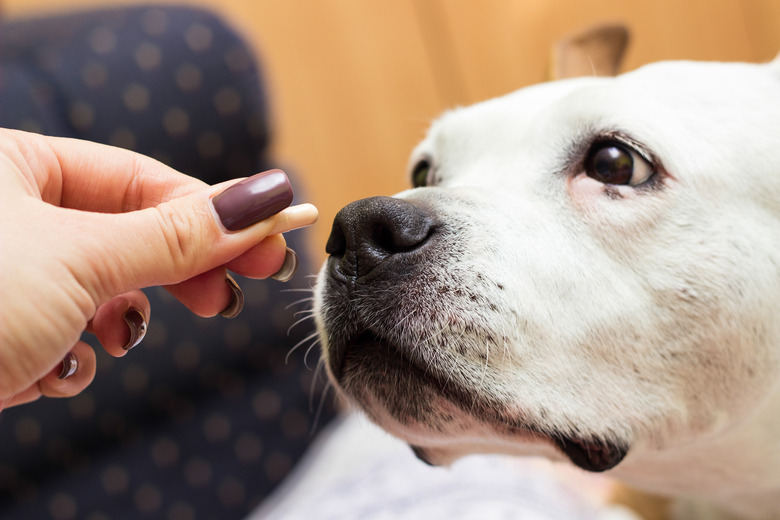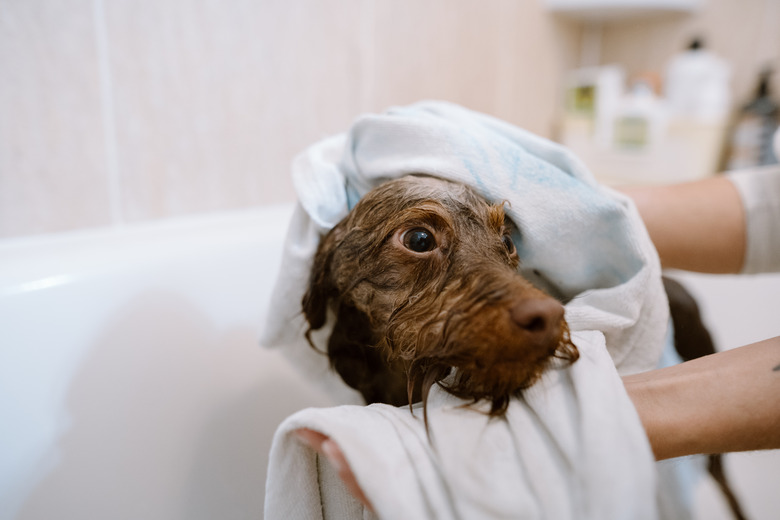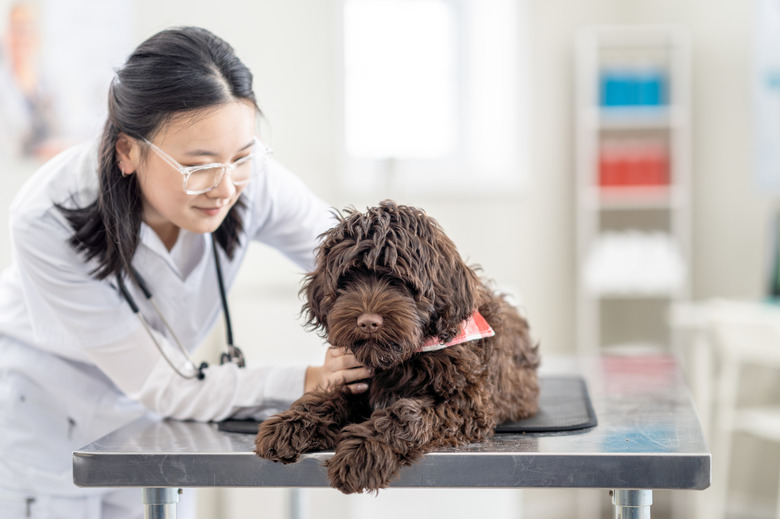Ringworm In Dogs: Treatment And Symptoms
If you notice skin lesions on your dog, they could be suffering from the topical fungal infection known as ringworm. Because symptoms of ringworm in dogs resemble those of other canine skin diseases, it's important to take your pet to the veterinarian for diagnosis and treatment. Ringworm easily spreads to humans, so if you develop lesions on your hands or other body parts, pay a visit to your doctor.
What is ringworm?
What is ringworm?
Technically known as dermatophytosis, ringworm is a fungal disease. It received its nickname from the raised, usually round area of the lesions, though these lesions tend to be common in humans but rare in animals with the disease. In dogs, ringworm primarily affects puppies and debilitated canines or those with a compromised immune system. Athlete's foot is a form of ringworm.
The fungus causes a skin condition that affects the dead layers of the hair and skin and sometimes affects the nails. It feeds on keratin, the material making up those layers. Once diagnosed, your veterinarian will likely recommend a combination of oral medication and topical treatment, including regular anti-fungal shampooing of the affected areas using medicated shampoo to combat the infection. You'll also have to disinfect your dog's living quarters with a bleach solution to kill the spores.
How is ringworm in dogs spread?
How is ringworm in dogs spread?
Like many contagious diseases, ringworm is spread through direct contact with the contagion — in this case, the fungal spores that cause ringworm. These spores can live undetected for up to 18 months in the environment and jump from furniture, food bowls, bedding, and combs or brushes onto your dog. A dog who comes into contact with ringworm does not always get a ringworm infection. After your dog is diagnosed with ringworm, disinfecting their living environment and rooting out contaminated objects is important in stopping recurrence of the infection.
Ringworm symptoms in dogs
Ringworm symptoms in dogs
Symptoms of ringworm in dogs can present differently than ringworm in humans. Some common signs of ringworm in an infected animal include:
- Lesions, commonly on the face, head, and front legs, but keep an eye out for lesions anywhere on the body
- Areas of hair loss, which can be patchy across the body, resembling alopecia
- Scaly, circular sores, though this is less common in animals
- Folliculitis, or hair follicle inflammation
- Furunculosis, or skin boils
Dogs with a mild case of ringworm may remain asymptomatic, but they can spread the fungus to other animals and to human family members.
Diagnosing ringworm in dogs
Diagnosing ringworm in dogs
Your veterinarian will likely take some of your dog's hair or skin as a sample of the lesion and perform a fungal culture to determine if your dog has ringworm. Usually, the results are available within a few days, but sometimes, the spores take time to grow. It can take up to two weeks follow-up time before your veterinarian can confirm that your dog has ringworm.
While a culture of your dog's skin is the most accurate diagnosis of ringworm, your veterinarian might also use a Wood's lamp. With this test, the hair sample placed under the ultraviolet light glows green if ringworm spores are present. However, not all spores will glow. Certain products used on dogs will glow under the lamp, resulting in a false positive.
How do I get rid of ringworm on my dog?
How do I get rid of ringworm on my dog?
One step you may have to take to get rid of ringworm on your dog is to shampoo your dog with an anti-fungal formula. Wear gloves and protect your own skin while you do this. Keep in mind that your dog may already be uncomfortable because of the ringworm, so make the bath as comfortable as possible. Make sure the water is warm, that they aren't slipping on the tub or tile, and that you can secure them easily, particularly if the bath is raised and a jump out of the tub can hurt them.
Ringworm in dogs: treatment
Ringworm in dogs: treatment
While lime dips and over-the-counter anti-fungal shampoos can treat ringworm without a definite diagnosis, you could be wasting your time and risking your dog's health. Other conditions with symptoms resembling ringworm include flea or food allergies, mange, and certain yeast or bacterial infections. That's why your veterinarian will perform a fungal culture on your dog even if the lesions look like a textbook case of ringworm. Then, a veterinarian will typically prescribe a combination of topical creams, ointments, shampoos, and oral anti-fungal medication to treat the infected pet.
The bottom line
The bottom line
If you suspect ringworm in your dog, bring them to your DVM (veterinarian) to confirm through diagnosis. Decontamination of all bedding, brushes, carpets, kennels, and any other environmental surfaces can help prevent reinfection or further spread of the fungus. Oral medication, shampoos, and anti-fungal medication are all treatment options for infected dogs. While purging ringworm from the environment, pet parents should use caution because the fungus can easily cause a skin infection in humans as well as animals.
